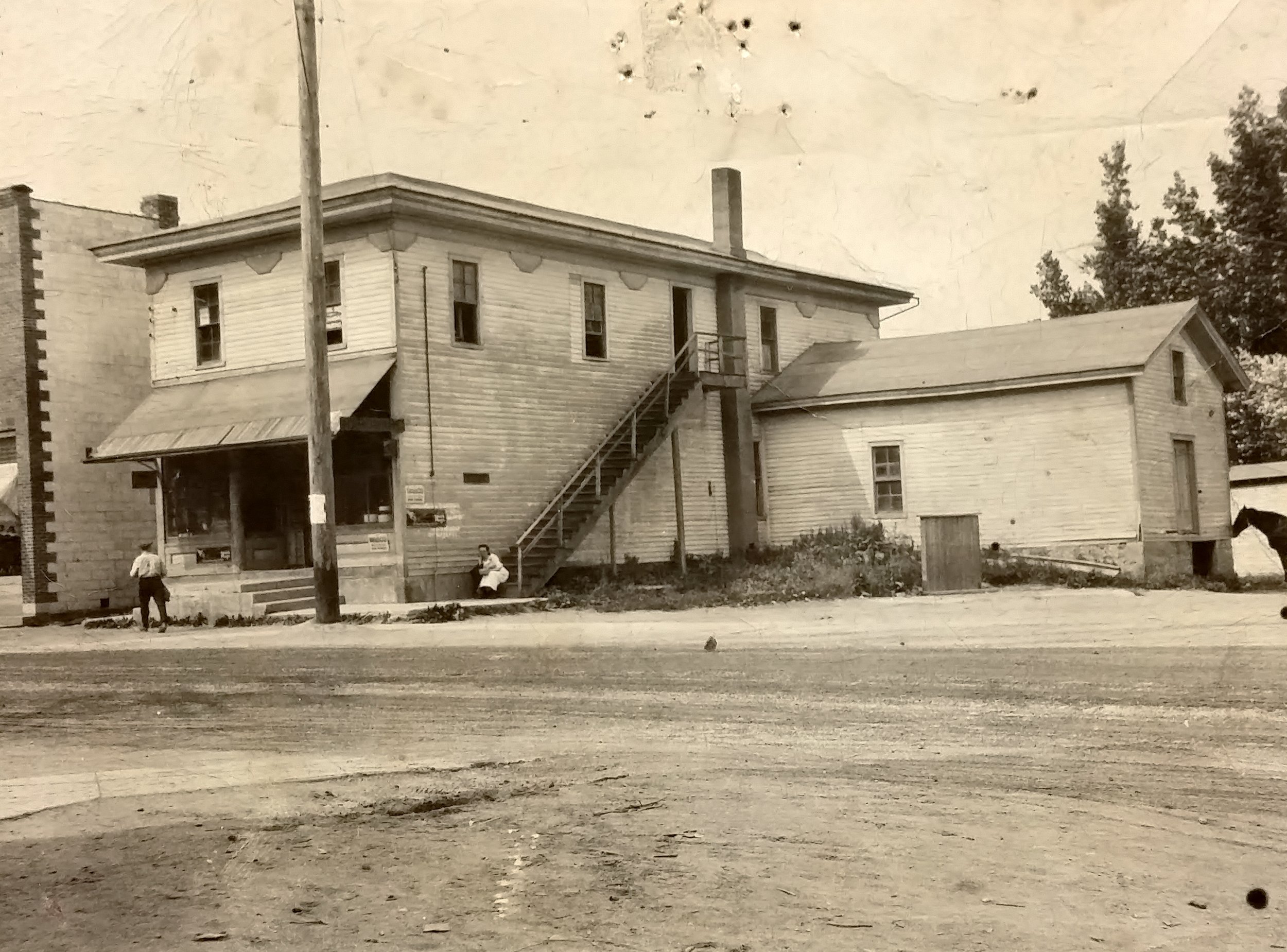
Black Building
Black Building
2002 North Cedar Street, Holt, Michigan
Status: Still Standing
Opened: Circa 1890s
Architect: Unknown
Ironically named the Black Building, the notably white frame commercial structure at the northeast corner of Holt Road and Cedar Street was built sometime in the 1890s or around the turn of the twentieth century by Abraham J. Black. It is the oldest remaining structure in downtown Holt, not including the many historic homes. Though it has a storied past, much of the history of the building is not recorded. Black’s advertising over the years included:
1901 - “A.J. Black has received carloads of coal and still there is more on the road. Abe says he will be able to furnish coal to all who use it. Either hard or soft coal at prices that defy competition; Give your order before prices advance.” This type of advertisement remained true through the next several decades. Black purchased a carload of coal annually to heat his home and to sell the rest to the community.
1901 – “Salt, Salt, Salt. 85 cents per bushel at A.J. Black’s.”
1901 – “Special Prices. Swamp Root 80 cents, syrup 25 cents. Jaxon soap, 9 bars for 25 cents. Star Soap, 8 bars for 25 cents. Plow shoes $1 25. A.J. Black, Holt.”
In 1926, Black made plans to move this building across the street to the southeast corner, parallel to the MUR (interurban) tracks. He then intended to build a new fireproof block on this site with two storefronts, similar to the Robinson Building. That plan, however, never came to fruition.
Black operated a general store in the building for 40 years, approximately 1893-1933. Black died in 1933.
The Abraham Black house, which stood directly behind this building through at least the 1940s, was home to Black from about 1902 through 1933. It had previously been owned by W.B. Watson, then his son W.W. Watson. On early maps, Holt Road was called Watson Road, which gets the name from pioneer W.B. Watson.
Bliss Hardware:
Starting in 1917, Black’s commercial building was operated L.E. Salisbury and Roy Bliss. Salisbury had a successful hardware store in Mason. The Holt operation was a partnership with Roy Bliss. It is believed Bliss took over the sole ownership of the business in the late 1920s. There are innumerable stories about Bliss Hardware over the years. It’s said to have had many farm supplies, basically a harness shop. Local residents have remarked, “they had everything in the world but only [Roy Bliss] knew where it was.” It has also been said that it was always very dark inside. The store also apparently had a dirt floor inside for many years. A longtime resident noted, “they sold rope back in those days (1940s) and they had the ball of it up stairs and they had the rope coming down [through a hole in] different sizes, down where the table… where they take and cash people out [was] at. They’d just pull that rope out and stretch it out and sell it to them.” The front steps of the building were a common meeting place for school children. After stopping at one of the many local establishments, the children would congregate on the front steps of Bliss Hardware to eat their candy or ice cream, often purchased at Hitchens. Roy Bliss retired after 42 years in 1959 and the contents of the building were auctioned off.
Following Bliss’ retirement, the subsequent businesses that operated in the space include:
1960s — PX Store
1970s — McDowell’s Studio of Tae Kwon Do.
1980s — Michael’s New Self Expression, hand crafted gifts and craft supplies
2003-Present — Original Okinawan Karate
Second Floor:
There used to be a staircase on the outside of the building leading to the door on the second story.
In 1921, Dr. C.L. Thompson opened a dental office on the second floor of the building.
By 1923, the shoe and chair repair shop of Mr. and Mrs. H.C. Schultz was located on the second floor. Both Mr. and Mrs. Schultz were blind and learned their trades at the Michigan School for the Blind in Lansing.
In later years, it is recalled that the second story was largely used for storage when Roy Bliss had the building. It is believed that there may have been a tack shop upstairs at one point in time.
The humorous “Employees Entrance” sign was painted by Sterling Silver Alf, a longtime resident and artist. Always down for a good joke, this is one of his longest lasting gags, now more than 30 years old. It has gone viral online for those unfamiliar with its history.
East Wing:
The building, for much of its early history, had a “wing” off the southeast corner. That wing was home to several different operations, one being an area where animal feed and grain could be loaded into vehicles, carriages, and wagons.
Eastman Bakery also called that portion of the building home for a period. Also in that wing of the building was a dry cleaners and tailor shop at one time. It is known that that structure was original to the building, it is also known that it was still standing through much of the 1940s. In 1947, Arthur Baker opened a bakery in the south wing. Initially the goods were furnished by the Lansing Bakery, but the Bakers soon produced their own products. The exact year that the wing was removed is not known, though it is believed to have been in the late 1940s or early 1950s.
